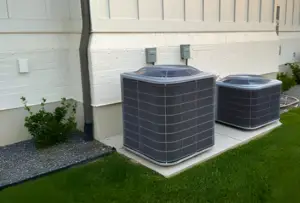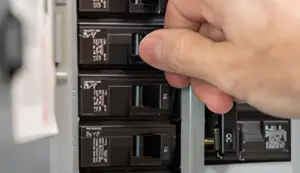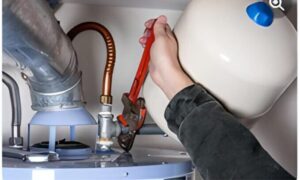They say that an ounce of prevention is worth a pound of cure, and when it comes to your water heater, this old adage holds true. If you’ve been experiencing lukewarm showers and higher energy bills, it may be time to take action. But fear not, because revitalizing your water heater is easier than you might think.
In this article, we’ll show you how a simple flush can make a world of difference. But that’s not all – we’ll also share some expert tips and safety precautions to ensure a hassle-free process. So, if you’re ready to say goodbye to cold showers and hello to a more efficient water heater, keep reading to discover the secrets of a rejuvenated system.
Preparation for Flushing and Opening the Water Supply
Before you begin flushing and opening the water supply of your water heater, it is important to ensure that the water is clear and free of sediment, securely close the drain valve, and remove the garden hose used for draining. To prepare for the flushing process, keep the end of the hose directed upwards and do not close the pressure-relief valve or hot water valve.
Instead, keep the hot water valve in the nearby sink or bathtub open. Open the water supply valve to fill the tank, and the air in the tank will be forced out through the open faucet and pressure-relief valve. Wait until water flows at full pressure from the open faucet before turning on the electricity or adjusting the thermostat. These sediment removal techniques will help maintain the efficiency of your water heater.
Flushing the Water Heater
To properly maintain the efficiency of your water heater, it is essential to perform regular flushing to remove sediment buildup. Flushing the water heater has several benefits and is of utmost importance for proper water heater maintenance. Regular flushing helps prevent sediment accumulation, which can affect the heating efficiency of the water heater.
By removing sediment, you can avoid damages such as a faulty heating element. Flushing the water heater is a simple yet effective maintenance task that can be done at no cost. It is recommended to consult the manufacturer’s instructions for specific maintenance guidelines. Regular flushing is a crucial step in ensuring the longevity and optimal performance of your water heater.
Final Steps
To complete the final steps of flushing your water heater, close the pressure-relief valve and open the faucet after the tank is full. After allowing 20 to 30 minutes for the water to settle, you need to test the water temperature at the nearest faucet. This step is crucial to ensure that the temperature is suitable for your needs. Use a reliable thermometer and check if the temperature matches your desired setting.
If the temperature is too high or too low, you may need to adjust the thermostat accordingly. Testing the thermostat accuracy is essential to ensure that your water heater is functioning efficiently and providing the desired hot water temperature. By following these final steps, you can revitalize your water heater and maintain its performance.
Additional Tips and Information
After completing the final steps of flushing your water heater, it is important to be aware of some additional tips and information that can help you maintain its performance and prolong its lifespan. Regularly flushing the water heater is vital to prevent sediment buildup and maintain heating efficiency. Consider using water softeners to minimize sediment accumulation.
This can further enhance the functionality of your water heater. Flushing the water heater regularly can also prevent damages such as a faulty heating element. It is recommended to inspect the pressure-relief valve for proper functioning and check for any leaks or signs of damage during the flushing process. Following the manufacturer’s instructions and guidelines for specific maintenance is crucial.
By adhering to these tips and regularly flushing your water heater, you can ensure its optimal performance and prolong its lifespan.
Safety Precautions and Warnings
Exercise caution and prioritize safety when performing maintenance on your water heater by following these important safety precautions and warnings. Preventing water heater damage and maintaining a safe environment is crucial for the longevity and efficiency of your water heater. Always wear protective gloves and a face shield to avoid contact with hot water or steam.
Be careful not to strain the drain valve, and seek professional help if it’s seized. Handle hot water and steam with caution, using protective gloves and clothing to prevent burns. Remember to turn off the power supply before performing any maintenance and follow proper electrical safety procedures. If you are unsure, it’s best to seek professional assistance for water heater maintenance. Prioritizing safety ensures a successful and injury-free maintenance process for your water heater.
Cost and Time Estimate
When estimating the cost and time required for water heater maintenance, it is important to consider factors such as the size of the tank, the severity of sediment buildup, and any additional repairs or replacements that may be needed. Flushing the water heater on a regular basis has several pros and cons.
On one hand, it helps prevent sediment buildup, improves heating efficiency, and reduces the risk of damages like a faulty heating element. On the other hand, it may require additional time and cost if repairs or replacements are necessary. The frequency of flushing depends on the quality of the water supply and the usage patterns.
Generally, it is recommended to flush the water heater at least once a year. However, in areas with hard water or heavy sedimentation, more frequent flushing may be necessary.
Beginner-Friendly Maintenance Task
To begin this beginner-friendly maintenance task, gather the necessary tools and materials for flushing your water heater. This simple task provides cost saving benefits and is essential for long term maintenance. First, ensure the water is clear and free of sediment before closing the drain valve securely. Remove the garden hose used for draining and keep the end of the hose directed upwards.
Do not close the pressure-relief valve or hot water valve, but keep the hot water valve in the nearby sink or bathtub open. Open the water supply valve to fill the tank, allowing air to be forced out through the open faucet and pressure-relief valve. Once the tank is full, turn on the electricity or adjust the thermostat. Regularly flushing the water heater prevents sediment buildup and maintains heating efficiency, saving you money in the long run.








